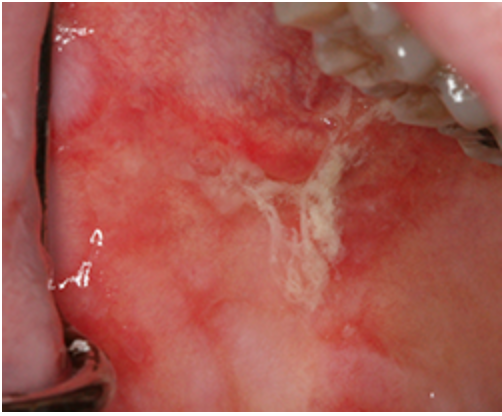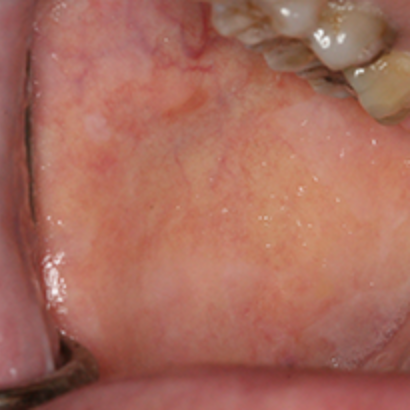Systemic chronic graft-versus-host disease (cGVHD) is an immune condition that happens after a transplant, when the immune cells of the graft attack the host’s tissues. This condition can happen after bone marrow transplants, even when the donor is related to the host. Oral manifestations of cGVHD usually occur 100 days after the transplant, and more than 70% of patient with systemic cGVHD develop oral cGVHD. Other organs can also be targeted during this time, most often including the skin, GI tract and the liver.
It is important to be able to recognize and treat such a condition, although occurring in very specific and rare circumstances. Oral manifestations can include erythema and ulceration of the oral mucosa, often very painful. Here we outline a case of oral cGVHD, described by Dr. Stooper, showing the diagnosis and management of this disease.
Case Presentation
A 50-year-old female presents to the office with a very painful lesion on the right buccal mucosa, present for 3 weeks. The pain of this lesion has lead to reduced mastication, and weight loss. The patient has had an allogeneic hematopoietic stem cell transplant for undifferentiated acute leukemia 8 month prior to the dental visit. The patient also reports a similar painful vaginal lesion, for which her gynecologist has prescribed systemic antivirals, antifungals, and corticosteroids – all which have not reduced any of her symptoms.

Based on her medical history and presentation of the lesion oral GVHD was diagnosed. The patient was prescribed:
- Topical dexamethasone rinse 0.5mg/5ml (10 ml swish, 5-minute dwell time and spit), 3 times a day. This was done to achieve contact of medication with all mucosal surfaces.
- Topical betamethasone gel 0.05% for direct application to ulcerative lesions, 3 times a day.
- Nystatin rinse 100, 000 units/ml (5 ml swish and spit), 4 times a day.
One-month re-evaluation appointment showed complete resolution of symptoms, return of comfortable mastication and weight gain.

Topic corticosteroids have been shown to hold significant benefit in managing cGVHD, as seen in this case.


